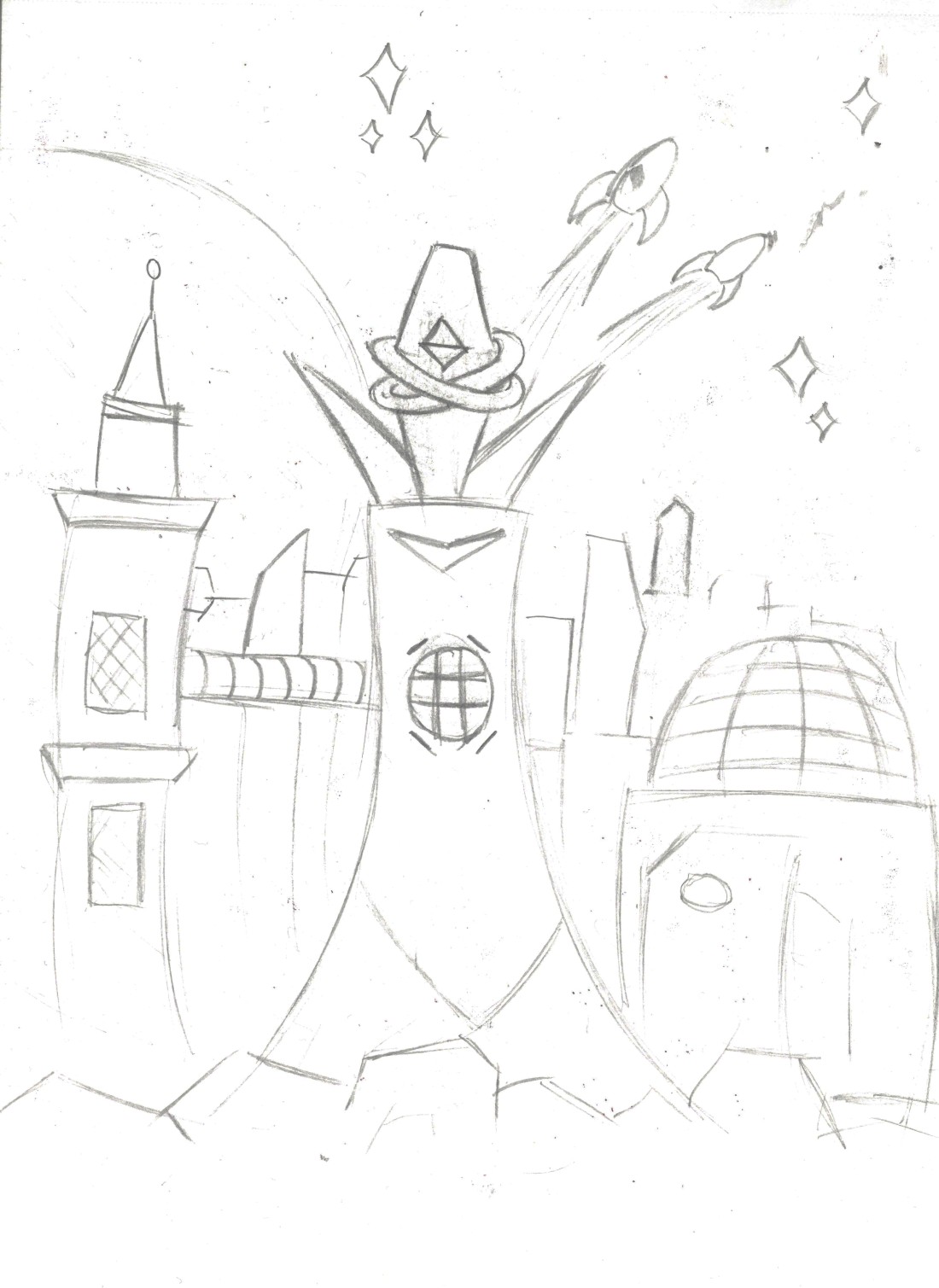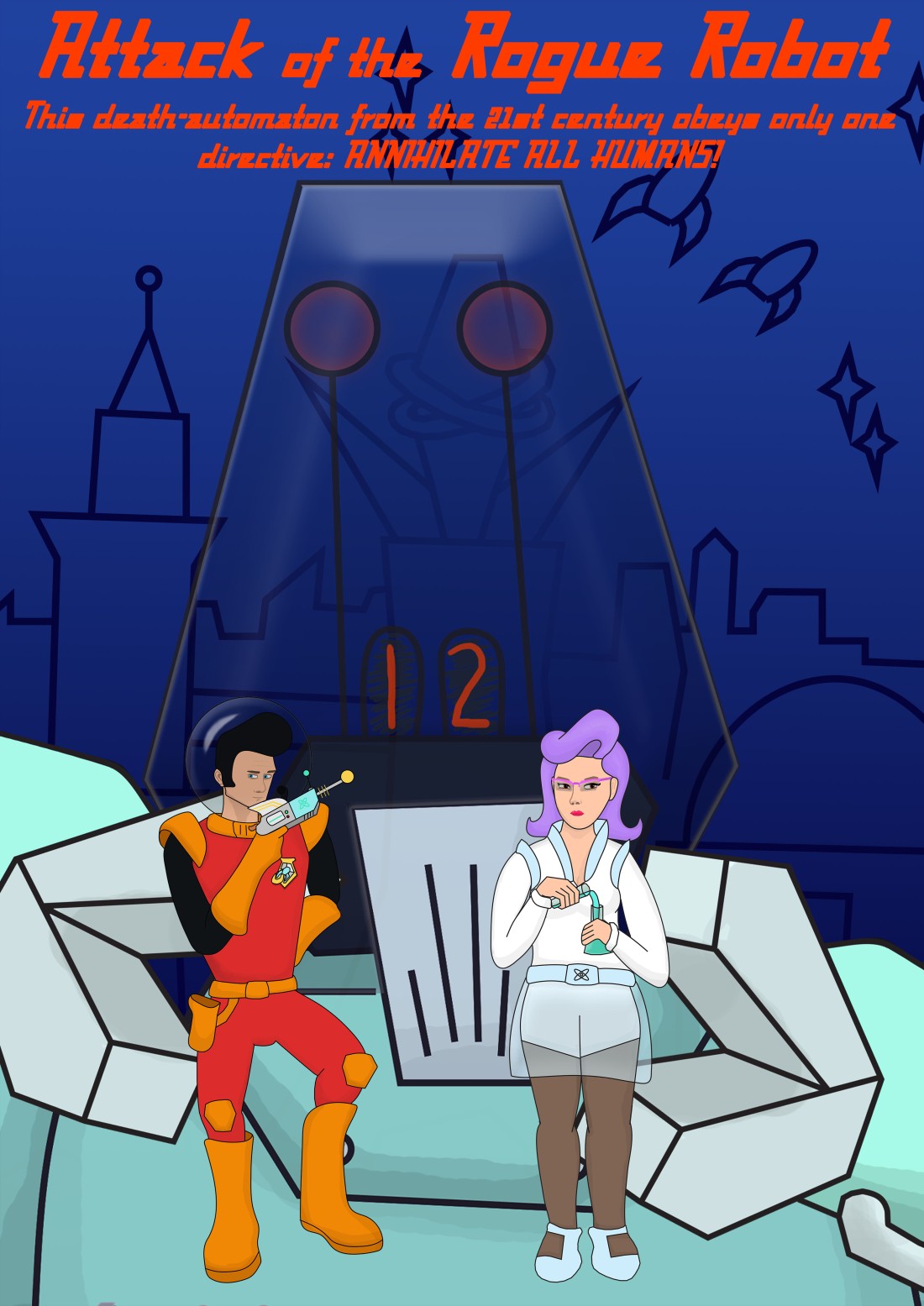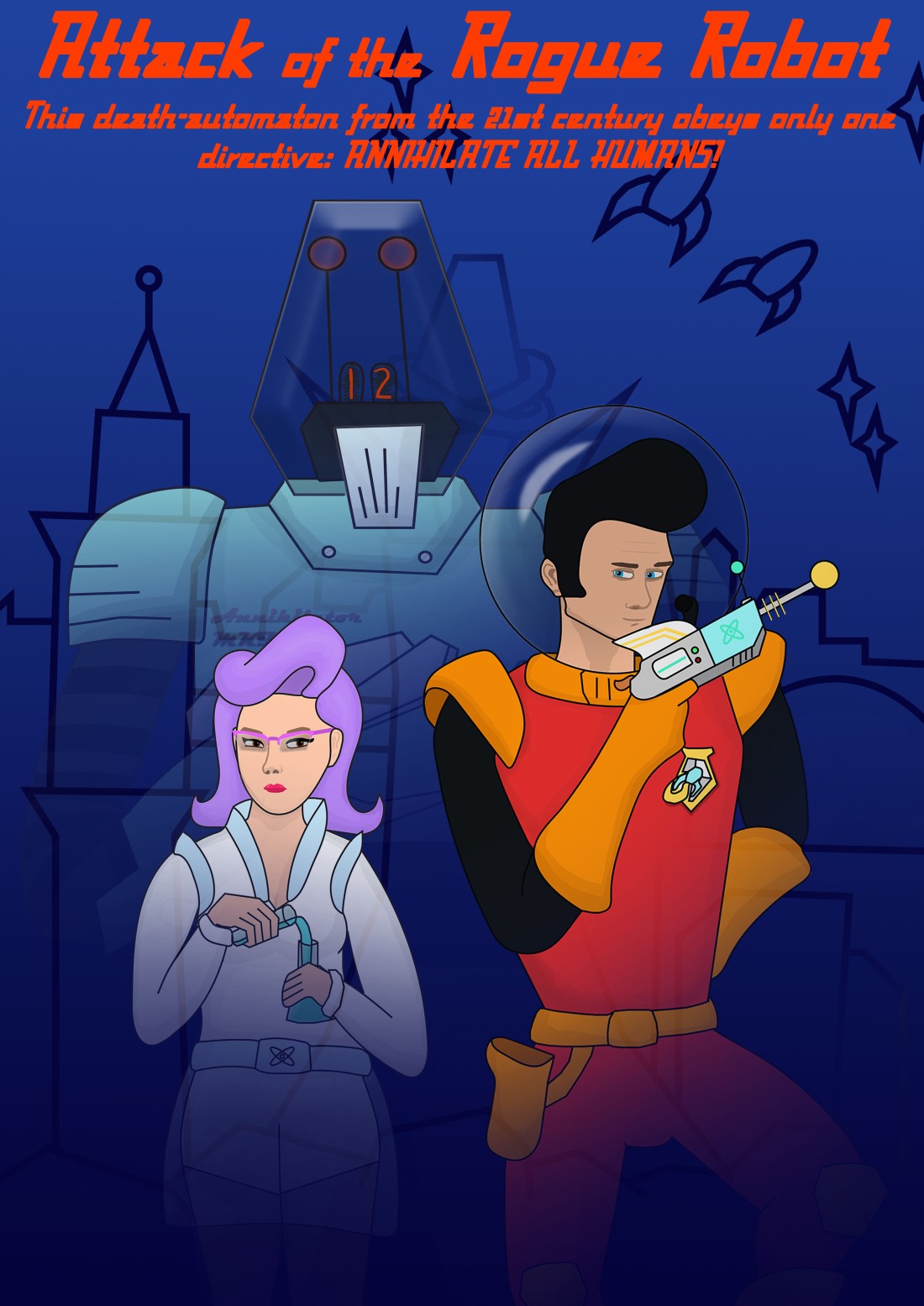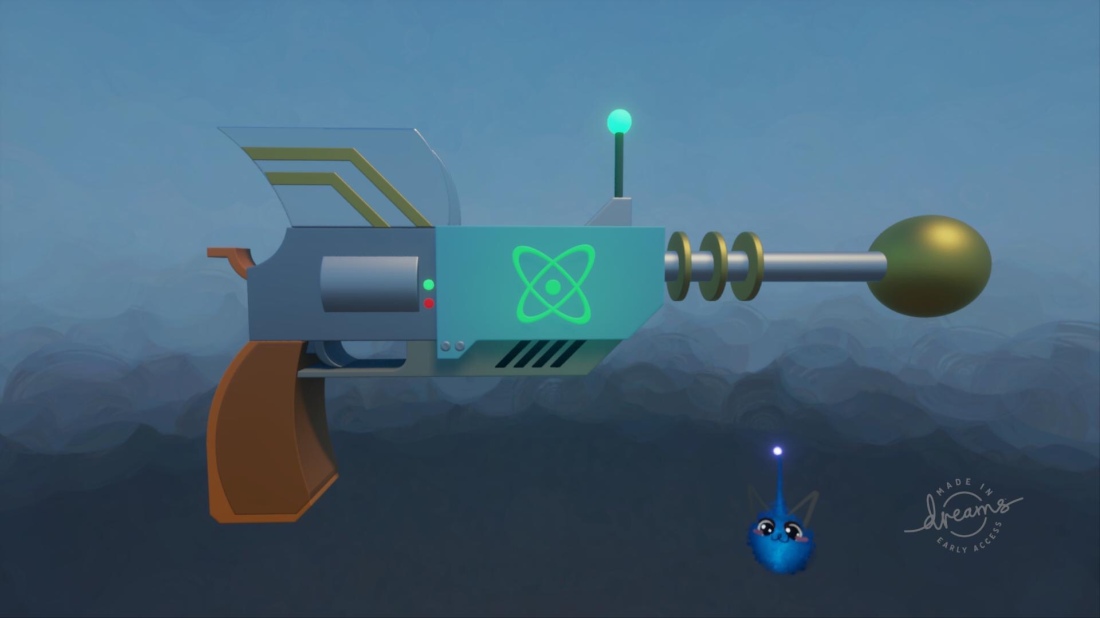To collect feedback for the project, I have designed the following questionnaire.
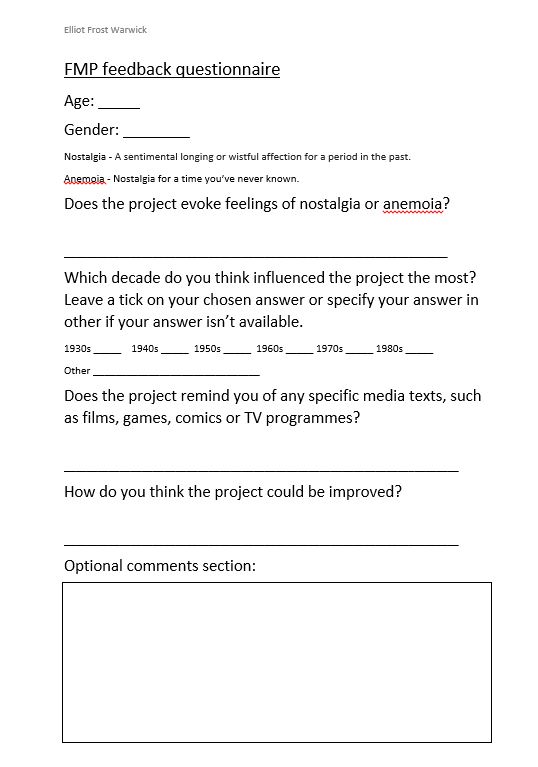
Although I initially planned to go the Norwich Games Festival, I was too nervous and didn’t want to present the project in person. Despite this, the project was still on display at the NGF and the questionnaire was still available to participants. The questionnaire got 4 responses from the NGF. I got the remaining 6 responses from art students at college.
10 questionnaires answered in total. Results:
Age: 17, 17, 17, 17, 19, 19, 23, 24, 30, 32
Age range: 17-32 (15 years)
Mean age: 21.5
Modal age: 17
Median age: 19
Gender: 5 male, 5 female
Does the project evoke feelings of nostalgia or anemoia?
8 yes, 1 no, 1 N/A
Most influential decade? (Some participants answered with multiple decades)
50s: 1 60s: 1 70s: 4 80s: 6 2000s: 1
Media texts:
Futurama, Godzilla vs Monster Zero. The other 8 answers were either left blank or were non-specific.
How could the project be improved?
3 unanswered, 4 responses based on background details or colour- “Too much blue”, 1 response based on character proportions “Some of the proportion is slightly off”, 1 based on shading “More shading”, 1 based on text “Difficult to read from a distance.”
Optional comments:
“Didn’t notice the robot had a head at first, blended in too much with the background.”
“Everything looks wonderful so far! Great work, dude! ^o^”
From the results of the questionnaire, I have concluded that the project was successful in evoking emotions of nostalgia and anemoia. However, the 50s retro-futuristic themes may not have been easily recognisable to the audience, who saw more of a 70s/80s influence. Most of the criticism of the project was focused on the background, specifically that it was too blue and lacked colour variation. I made the decision to use a simple background with dark blue tones because I thought it looked best and contrasted with the characters, but some more experimentation could have yielded better results.
I regret avoiding the NGF. In hindsight, it may not have been too bad, but nerves got the better of me. I lacked the confidence to present the project because I wasn’t 100% proud of the final product, because I noticed flaws that others didn’t. However, the feedback from the questionnaire has alleviated some of my concerns.
(Changes have been made to the blog posts “Initial narrative and character bios” and “Preparing for the Norwich Games Festival”.)












